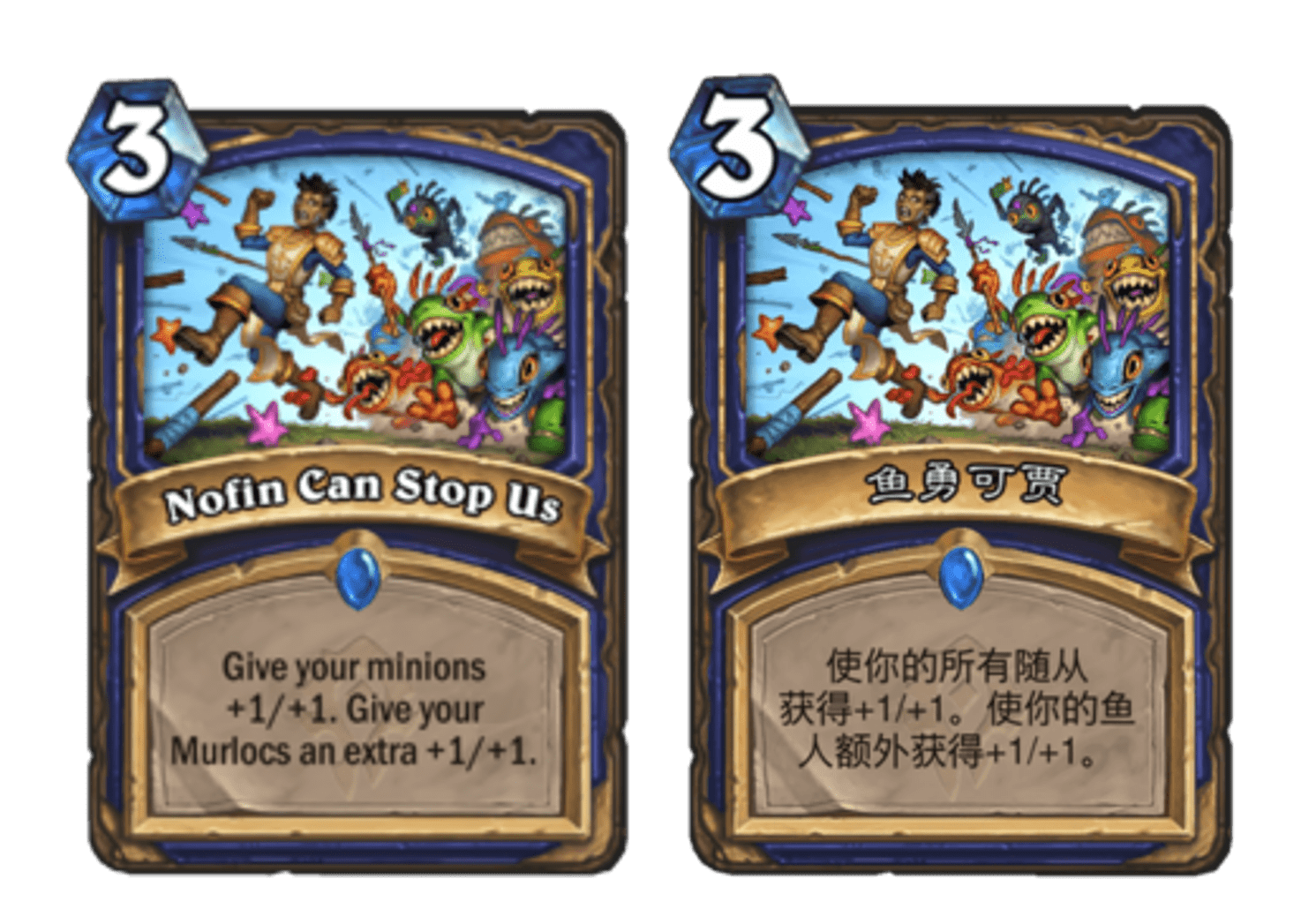Conveying Spirit Through Form to Achieve a Unity of Form and Spirit – Game Localization Writing Style Guide
Localize a game in the right style

30th June 2022 by LangLink Miller
Game localization is a very broad concept, ranging from in-game text and press release processing to UI translation and layout adjustments, and even localized game dubbing. In any case, the first thing to do before proceeding with game localization is to understand the original style of a game. Mobile MOBA players, who enthusiastically take part in the localization of strategy games, may encounter difficulties understanding the complex tags and gameplay mechanics associated with PC games.
Similarly, a player who excels in navigating complex business games may not find it as easy to handle a simple yet enjoyable indie game. Therefore, the key lies in effectively localizing the style of the game to resonate with PC game or mobile game players, ensuring that the game localization process captures their interest and provides them with a seamless gaming experience.

This is a process of understanding the original style of video games and then conveying it to the localized version. To convey the original style of video games to its best, it is necessary to convey spirit through form to achieve a unity of form and spirit.
1. Understanding the original style of a game
To excel in game localization, an ideal specialist should possess a deep passion for gaming and a wide range of interests, along with a willingness to experiment. However, there may be certain game genres that are unfamiliar to us. In such cases, it is crucial to address the following aspects before proceeding:
– Determine if the game is a brand-new release or part of an existing series.
– Ascertain if the game is already available in its source language.
For the existing game series, valuable information can be found online by exploring its predecessors. Even for newly released games, extensive references in English (and even the target language) can be found if the source language version has been available for some time. Additionally, analyzing other games within the same video game genre can provide helpful insights. For instance, translating the Tropico series can be aided by referring to the Anno series due to their similar gameplay mechanics, while translating Battlefield V can draw inspiration from Company of Heroes 2, given their shared background.
Game trailers and live footage serve as excellent resources to familiarize yourself with a game’s style. However, there are numerous other sources to explore, including:
– Game encyclopedia for background information: Fandom, Huiji, etc.
– Official channels for game details: official development blogs (e.g.: and Steam News and Anno Union)
– Player forums for game details: Reddit and Baidu Tieba
– Live footage: Twitch, Bilibili and other platforms
In general, videos are often more useful than text, and even audio can provide more clues. The visuals, the tone, and the pauses, they all reveal a little bit about the game. If it’s a new, unreleased game, we must make full use of limited resources, including references and clues from clients and the project content, translation memories ™, and glossaries.
We learn about the tone of a game from these resources, for example:
– What is the basic gameplay: match 3, business, or RTS?
– Is it an intense, dark hardcore game, or is it a fun, varied party game?
– Is it a story-focused, immersive game or a competitive game that focuses on the online play?
Gaining a comprehensive understanding of the game’s overall style is crucial before translation, allowing for necessary adjustments during the game localization process. It is a progressive journey of grasping the game style as we delve deeper into the game. As we know more about the game, we may need to adjust the style of text already translated, which often feels painful and time consumption. However, it is critical for guaranteeing a consistent style across a project (especially across a large project). Such adjustments also highlight the importance of understanding the game’s overall style before game translation.
2. Conveying the original game style to the target
There is an art to conveying the original style of a game in the right way. Let’s look at a simple phrase:
Home, Sweet Home.
Let’s say it’s the title of a side quest. A literal translation could be “甜蜜之家”. There seems nothing wrong with it, but we rarely see this expression in our lives. So we need to think about the style of the game. If it’s a fun, entertaining pc games, we can use “快乐老家”, a well-received meme, to convey the basic meaning of the original without going too far. If it’s a hardcore game, this wordplay seems inappropriate, and a more discreet version could be “温馨家园”.
We call this approach “conveying spirit through form to achieve a unity of form and spirit”. “Spirit” is the style of a game, and “form” is the way we convey the game style. Here is a simple example of a card from Hearthstone:

Hearthstone is an entertaining card game (available on PC, Mac and iPad) . Even if we’re not familiar with the game, we can see that the English text is a parody of “Nothing Can Stop Us”. Therefore, we can be bold to add some humor to the game translation. As this card has an extra effect on Murlocs, the translator uses a parody of “余勇可贾” to express the meaning of “have the energy to spare”.
However, it should be pointed out that this kind of translation is skillfully done when there is a perfect chance for a parody. In other cases, we should not try when the original meaning may be compromised. In fact, our advice is to use plain but attractive language. While “plain but attractive language” seems contradictory, it is not. Let’s take Du Fu’s poem as an example: “Two yellow orioles sing amid the willows green; a row of white egrets fly into the blue sky” (两个黄鹂鸣翠柳,一行白鹭上青天). The language sounds plain without any flowery speech, but the color contrast, visual presentation, antithetical parallelism, and rhythm in it are all worth appreciating. The same is true for localization. We pursue poetic language while conveying the content and style of the original text to its best, no matter it is a work of introspection full of critical thinking or a romantic ode featuring a flow of mind. Here is another example for your reference:
The moon shall be tinged with blood; The Sun shall be obscured. | 月亮将染上鲜血; 太阳也将变得晦暗不明。 |
The Earth shall be covered by waters, And the brilliant stars shall fall From their sanctuaries in the heavens. | 大地将被洪水淹没, 而灿烂的星辰也将从天堂的圣殿中坠落。 |
Fire and smoke shall rise up. Until they reach the very skies. | 烈火和浓烟将拔地而起, 冲天而去。 |
It’s from a hardcore game that gives game players an epic experience. We must treat this descriptive text with caution after understanding the style of the game, as it shapes the world view of the game and plays an important role in players’ experience. To create a horrible eschatological scene and convey the style of the original text, we can use some mystical expressions (i.e., conveying spirit through form), such as “晦暗不明” (obscured) and “星辰” (stars), and pay attention to the rhythm such as “将…也将” (shall be… shall be…) and “拔地而起,冲天而去” (rise up. Until they reach the very skies). We can see that the expression here is actually very plain without flowery words or deviating from the original text, but the target text remains attractive and achieves “a unity of form and spirit”.
Conclusion
We can draw a conclusion for localizing a game in the right style in two steps: (1) understanding the original style of a game and (2) conveying it to the target. First of all, we should make full preparation for translation by collecting all useful materials to have a basic idea of a game and its style. Then we need to present the gaming style in the right way, either rigorous or lively according to the tone of the game, while plain, attractive expression is a safe, universal approach.
With all of these tips in hand, how can we improve our ability to localize a game in the right style? We intend to illustrate this with a dialog from the Analects of Confucius:
Zi Gong replied, “It is said in the Book of Poetry, ‘As you cut and then file, as you carve and then polish.’ The meaning is the same, I apprehend, as that which you have just expressed.”
The Master said, “With one like Ci, I can begin to talk about the odes. I told him one point, and he knew its proper sequence.”
In short, to embark on a successful game localization journey, it is essential to leverage all available resources, draw inspiration from released games, observe, practice, engage in idea exchange, and reflect deeply. Only then can we truly immerse ourselves in the rich world of games? Remember, a journey of a thousand miles begins with a single step. Take that step now and explore the vast universe of games firsthand!


